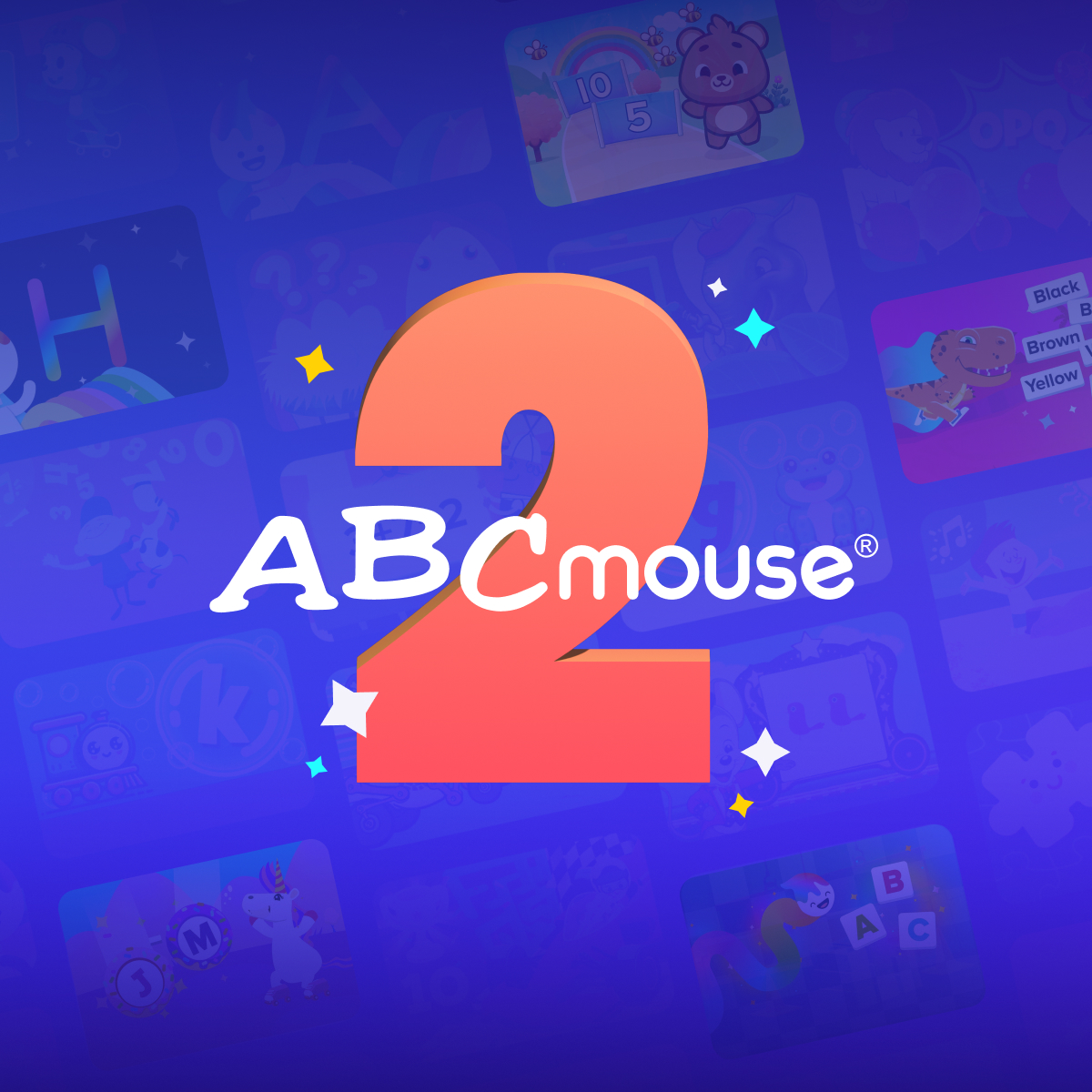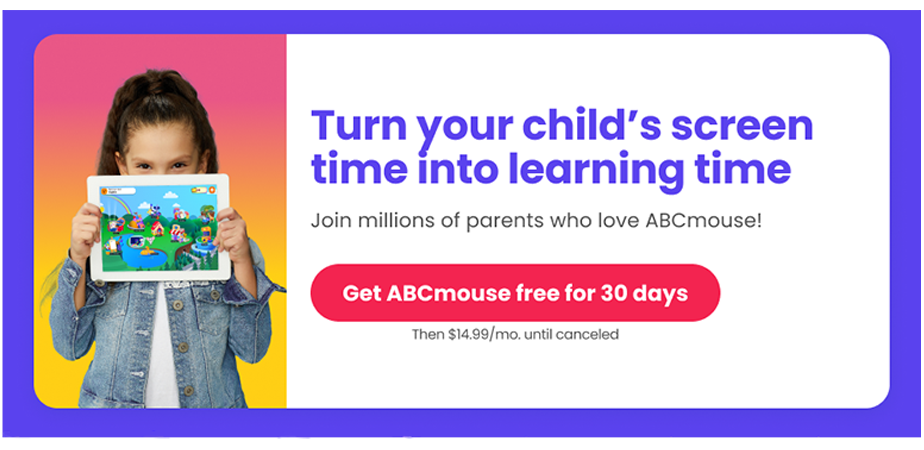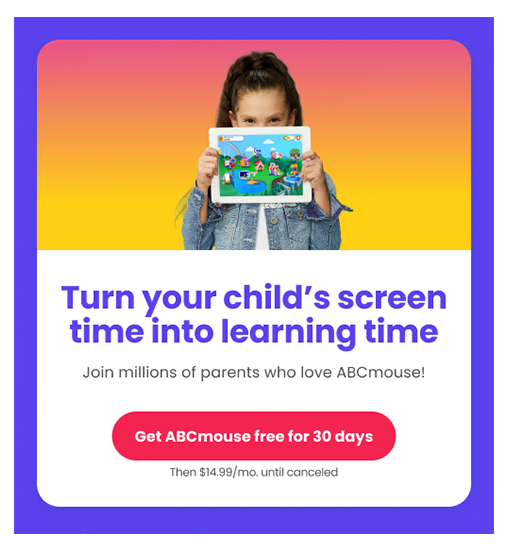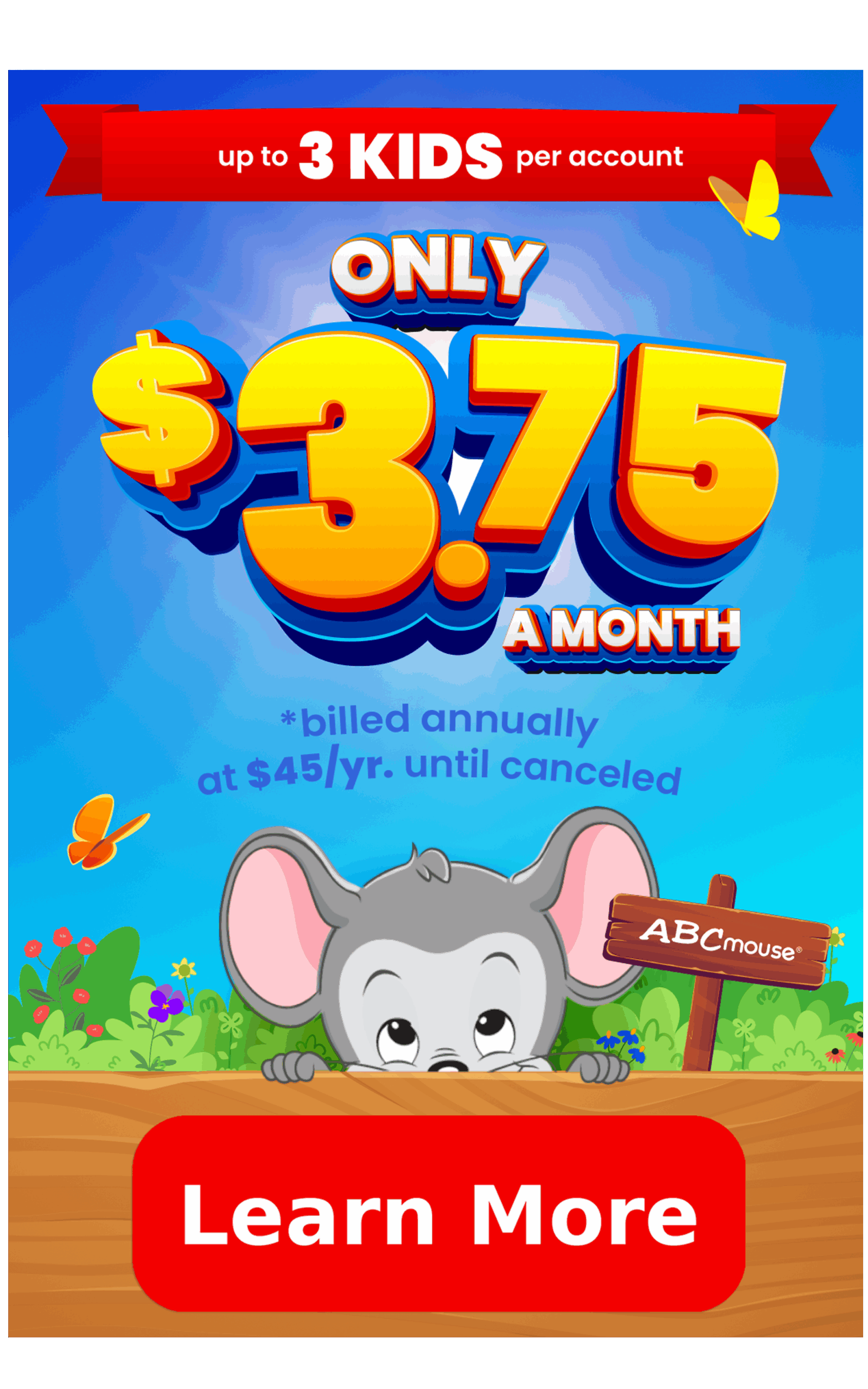
Screen Time and Education Apps: Finding a Balance
Discover simple ways to make screen time safe, smart, and beneficial for your child.
Since the advent of screens, parents have worried about how much time children spend in front of them. According to recent studies, those concerns aren’t always necessary, as research confirms that high-quality educational apps can boost early literacy, math, and problem-solving skills. However, when using educational apps for kids, it’s essential to pick the right one and find the right screen time balance.
After analyzing 36 different studies, researchers determined that “educational apps have a positive overall effect on literacy and math skills for children in preschool to Grade 3.”

Just like Sesame Street and Mr. Rogers’ Neighborhood demonstrated that kids could actively engage with screens as they learned academic and social skills, today’s best educational apps offer the same benefits—with the added advantages of true interactivity and personalized feedback.
But how do parents decide what amount of screen time their child should spend on learning apps? Here’s how to choose the right screen activities for your child, demonstrate responsible device behavior, and balance screen use with other activities.
Understanding Screen Time in Early Childhood
Screen time is any time spent on a device, including TV, computers, laptops, tablets, smartphones, and game consoles. Experts break screen time into two categories: active and passive.
| Active Screen Time | Passive Screen Time | |
| Characteristics | User is involved and engaged with the device and content | User passively watches content with minimal or no interaction |
| Examples | Completing homework on a laptop; using an educational app on a tablet; video chatting with friends or family; playing strategic or problem-solving video games | Watching TV shows, movies, or online videos; scrolling through social media; watching someone else play a video game |
| Pros | Builds academic and social skills; promotes engagement, focus, and critical thinking; supports creativity | Can be relaxing and entertaining for short periods |
| Cons | Can limit physical activity; benefits depend on quality of content; fast-paced games may cause overstimulation | Less cognitive engagement; limits physical activity; overuse can cause attention issues and sleep problems |
How Much Screen Time is Too Much for Toddlers and Preschoolers?
For many years, experts like the World Health Organization (WHO) have recommended limiting screen time to no more than an hour a day total, with no screen time at all before the age of two. But some experts are updating their advice in response to changing realities.
The American Academy of Pediatrics (AAP) guidelines no longer set strict screen-time limits for most ages. Instead, they recommend focusing on what children are doing on screens rather than how long they spend. For example, an hour of engaging with a research-backed educational app can bring more benefits than an hour of streaming cartoons.
It’s also important to minimize passive screen time and balance all screen time with other healthy activities like going outside, playing with friends, or spending time with family.
Finding the Right Screen Time Balance: 10 Tips for Parents
- For toddlers and preschoolers, aim for no more than one hour a day of high-quality, active screen time. This includes learning apps, educational videos, and video chatting with family.
- When your child starts school, take into account how much time they spend on screens each day in the classroom or for homework. If they’ve had a screen-heavy day at school, consider limiting their screen use at home.
- Prioritize active screen time over passive watching. Use interactive learning apps, watch videos that encourage kids to sing or dance along, or play online games that build problem-solving skills.
- Choose educational apps carefully. Look for experiences free from third-party ads and that have clear learning goals and true interactivity that encourages creativity and critical thinking.
- Co-view and co-play with your child. This is especially important for toddlers and preschoolers—watch videos and play games with them, guiding and sharing their experience.
- Integrate lessons from educational apps into offline activities. For example, look for letters and numbers on signs when you’re out for a walk, or practice reading and simple math at the grocery store.
- Monitor your child’s progress on learning apps. Take advantage of reports or tracking features so you can ensure the app is truly benefiting your child.
- Mix screen time with offline learning and indoor/outdoor play. Try setting a daily schedule for screen use, such as half an hour before lunch and half an hour after dinner. After screen time, help your child transition to other activities, such as playing outside or reading a book together before bed.
- Watch for screen time red flags. If your child throws tantrums when screen time is over, says they’re bored with any non-screen activity, or has trouble focusing or sleeping, they may be spending too much time on screens.
- Don’t rely on screens for emotional regulation. Teach kids how to recognize and regulate their emotions with mindful breathing or physical activity rather than self-soothing with screens.
Screen Time Red Flags
One of the best ways to find the right screen time balance for your child is by monitoring and responding to their behavior. If you note any of these behaviors in your child, you may want to reevaluate the quantity and quality of their screen time.
- Emotional outbursts or mood swings: Kids may throw tantrums or argue when screens are taken away. They might also be irritable, cranky, or restless after screen sessions, possibly from overstimulation.
- Social withdrawal and loss of interest in non-screen activities: Children prefer screens over reading, playing outside, or creative and imaginative play, and say they’re bored unless a device is involved. They may show less interest in talking or playing with family and friends in person, preferring virtual interactions or solo screen experiences.
- Sleep issues: The bright lights of screen use close to bedtime can delay sleep or cause kids to sleep less deeply.
- Decline in developmental or academic skills: Teachers or caregivers may note a regression in language, fine motor, social-emotional, and academic performance.
- Physical signs: Too much screen time can cause headaches, dry eyes, and neck pain, and lead to sedentary habits that may cause health issues.
- Lack of focus: Kids who spend too much time on screens can find it difficult to pay attention to activities that aren’t fast-paced or interactive.
The Benefits of Educational Apps for Kids
Educational apps and games usually provide active screen time, and there are proven benefits of using high-quality learning apps in moderation. For example, research shows that toddlers and preschoolers especially benefit from high-quality educational apps. An Florida International University (FIU) study found especially strong evidence for apps geared toward kids ages 2 to 8 that teach early math, language, and literacy skills.
The FIU study determined that early learning apps can boost beginner academic skills, such as:
Letter recognition
Letter sound correspondence
Spelling
Phonics
Vocabulary
Comprehension
Number sense
Counting
Basic arithmetic
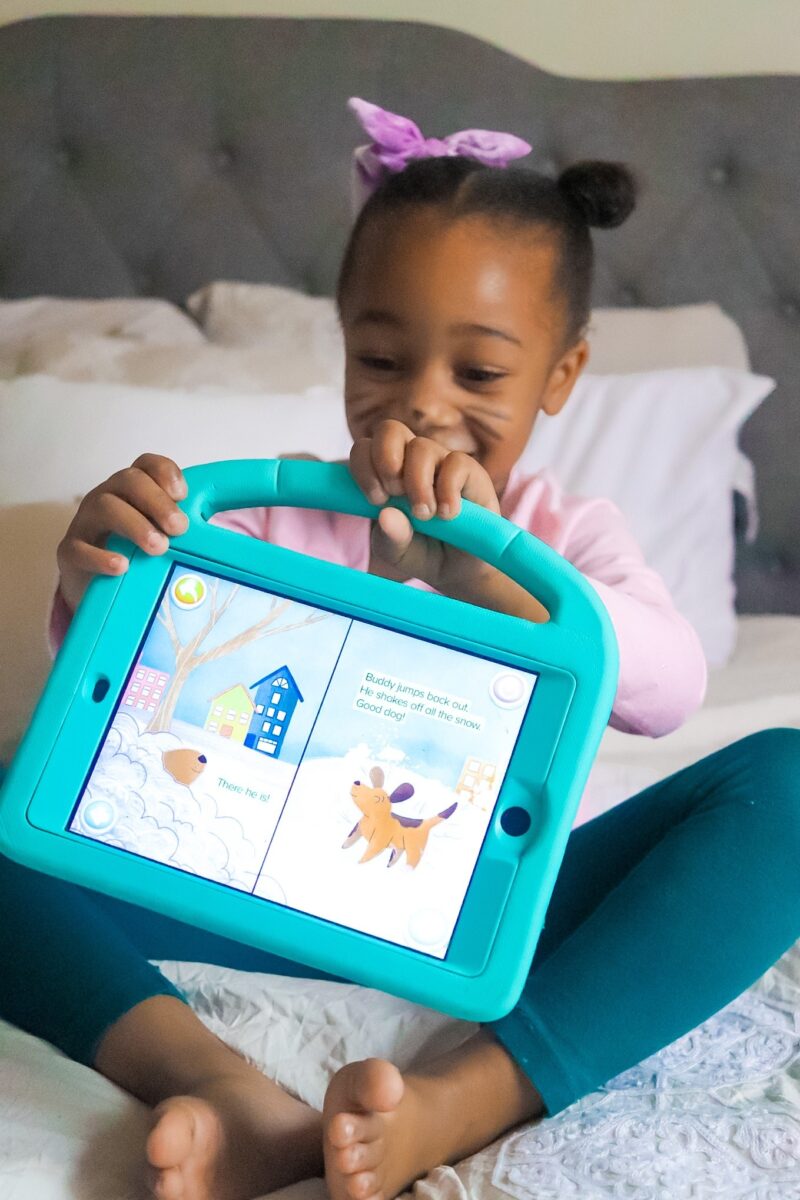
More Research Backing the Benefits of Educational Apps

Multiple research studies suggest that game-based learning through educational apps improves children’s math and literacy skills, as well as their cognitive development.
Additionally, in an Age of Learning study regular ABCmouse use was shown to double learning gains in preschoolers*
*Randomized control trial conducted by Age of Learning. PreK children used ABCmouse for at least 2 days/week and for at least 1 hour per week. Go to www.aofl.com/research for more information.
How to Choose Quality Educational Apps
Not all learning apps provide the same benefits for kids. Some focus more on passive activities, like viewing videos, while others may distract from learning with ads and other interruptions. You’ll also find apps that are too fast-paced and overstimulating for meaningful learning to occur.
What Makes an App Educational?
When you’re considering a new app for your child, look for these factors:
- Clear learning goals and accurate, age-appropriate information
- Curriculum is fully aligned with early childhood education standards
- Interactive, play-based learning that encourages problem-solving, critical thinking, and creativity
- Positive reinforcement and proper pacing
- A safe learning environment with minimal distractions from ads and pop-ups or flashy features that don’t serve any real purpose
- Features that support parent engagement or teacher alignment, such as tracking or reports
- Personalized and adaptive learning that uses technology to adjust content to a child’s developmental level.
- Research-backed outcomes highlighting measurable learning that can occur with the app
Learn more about choosing good educational apps for your child here. Then, compare ABCmouse to other learning apps. You’ll find screen time with ABCmouse 2 is active and engaging, with proven benefits for kids aged 2 to 8.
Co-Viewing and Co-Playing: Why It Matters
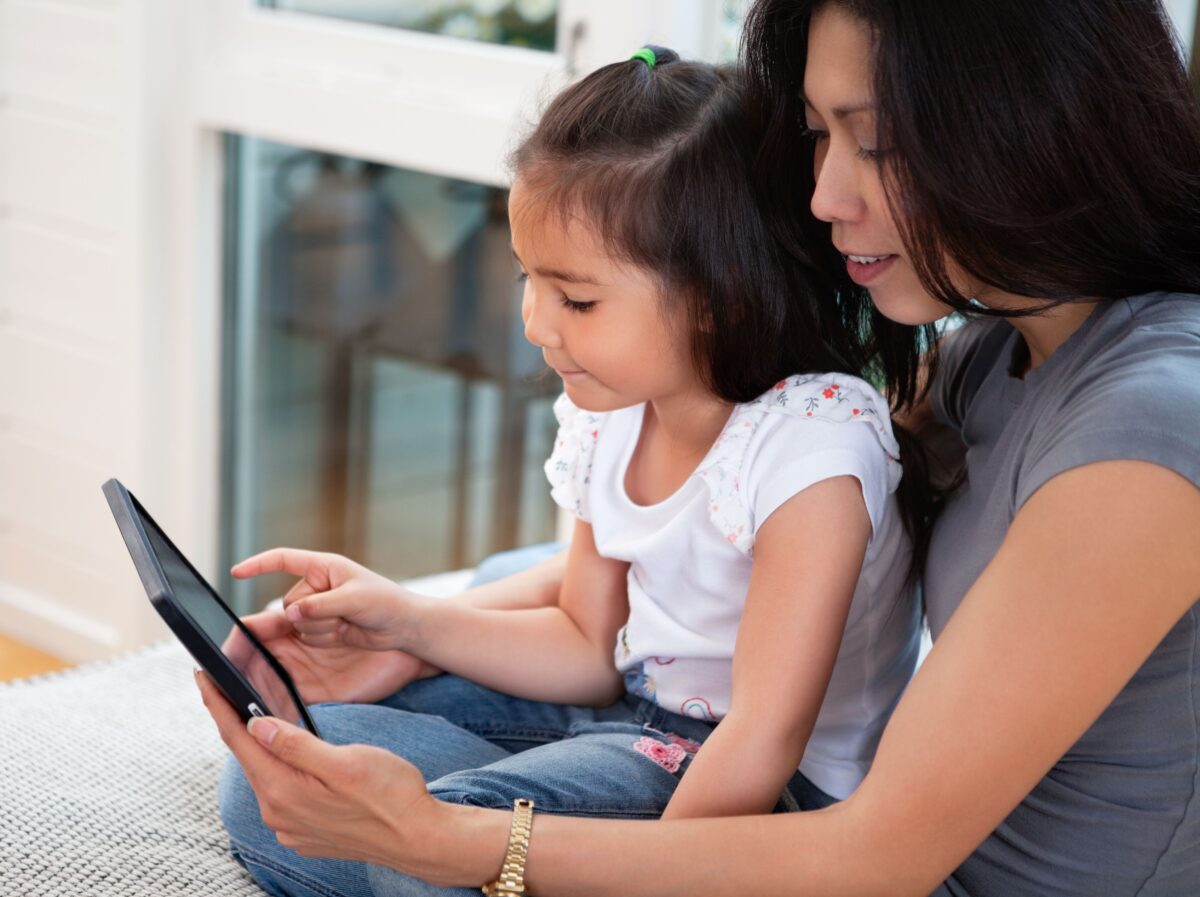
In studies on screen time and educational apps for toddlers, preschoolers, and young learners, researchers have noted the importance of something educational apps themselves can’t provide: parental involvement.
“Co-viewing can open a window into your child’s online experiences in a context of sharing and trust,” says Megan Moreno, co-director of the National Center of Excellence on Social Media and Youth Mental Health. She notes that co-viewing and co-playing can “build parent-child bonds and give you the chance to help your child navigate the digital landscape in a positive way.”
How to Use Educational Apps Alongside Young Children
Try these tips for co-viewing or co-playing with your toddler, preschooler, or early elementary child.
- Always test-drive apps before introducing them to your child. Make sure the experience is one they’ll benefit from and enjoy.
- Walk them through the basics of the app, then let them explore. Guide their learning if you find they’re getting distracted or discouraged, but let them take the lead.
- Join in by singing or dancing along and taking turns when playing games. From time to time, congratulate your child on their efforts, or ask open-ended questions about what they’re learning.
- When screen time is over, help your child transition to a screen-free activity that provides real-world practice using their new skills.

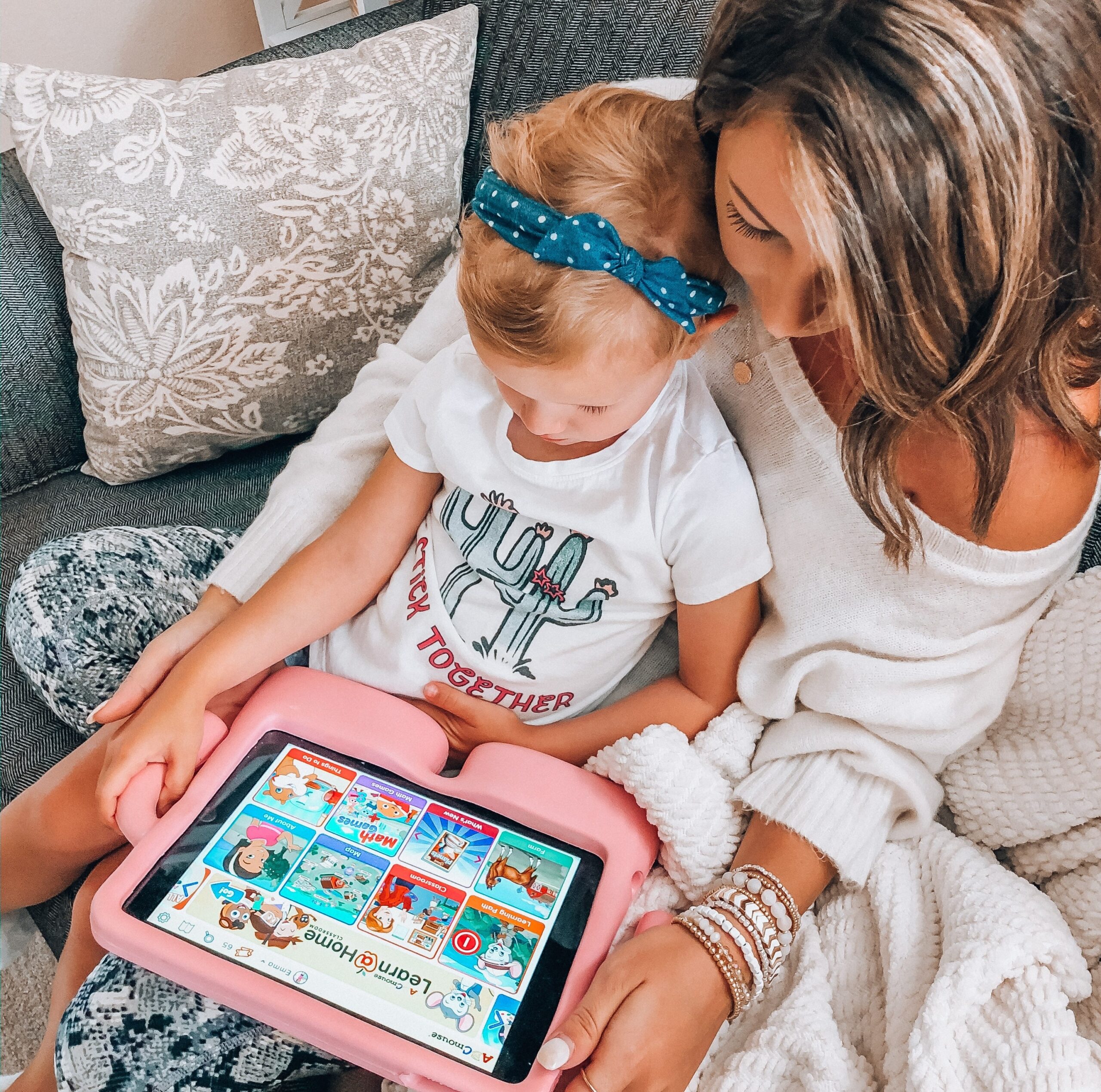
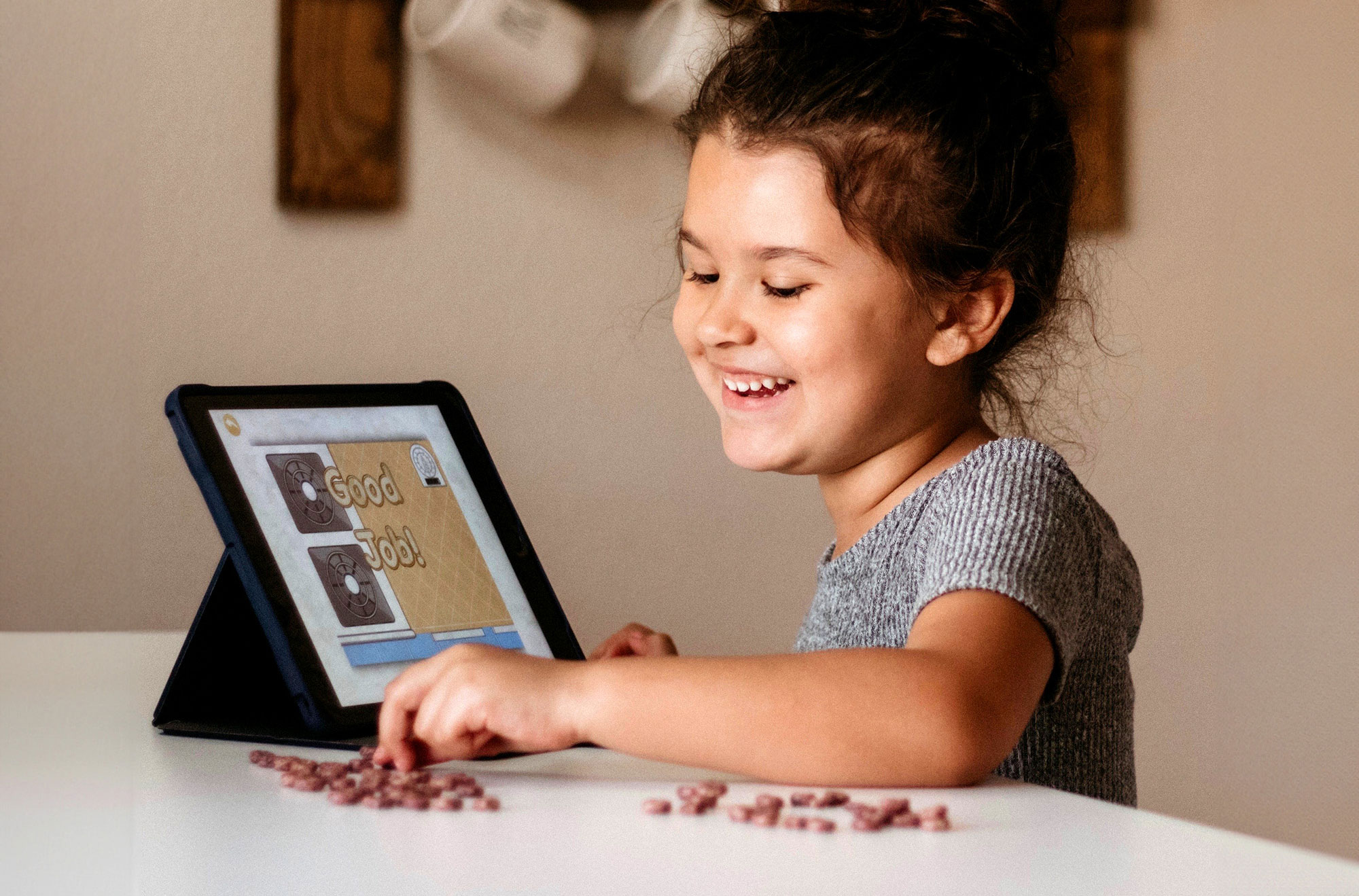
Active Screen Time Balance With ABCmouse 2
Quality educational apps provide engaging and empowering experiences that make screen time count. ABCmouse 2 encourages creativity, problem-solving, and persistence through open-ended games and a library of more than 13,000 learning activities (with ABCmouse Premium). It also includes activities that promote healthy routines and strengthen executive function skills.
- Safe environment that’s free from third-party ads
- Every moment of screen time is purposeful
- Full parent portal with usage reports, activity recommendations, and insights into what their child is learning
- Set daily screen time limits, helping establish healthy digital habits for your family







